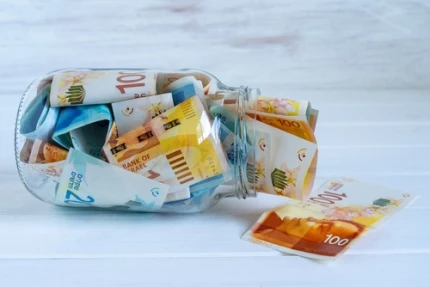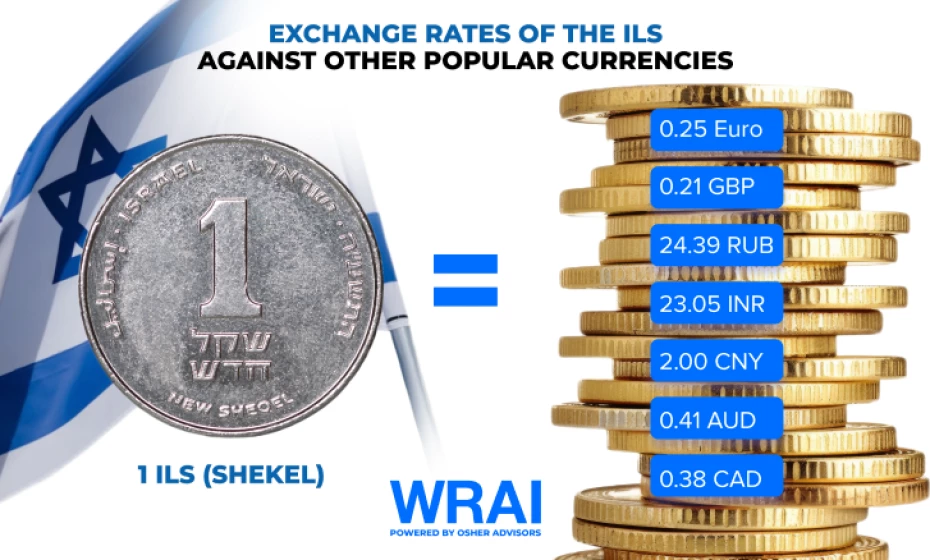Israel Currency
The economy of Israel is growing. It regularly ranks high on different ratings, and continues to improve in various aspects. There are several reasons for that. The country has a well-developed IT sector, a skilled workforce, and is a popular destination for immigrants. Several economic reforms of the past and some smart planning played a big role as well.
The shekel is the main currency used in Israel. It’s often abbreviated as NIS (unofficially) and ILS (officially). Its value is quite stable and there are many denominations. In this article, we’re going to cover the history of this currency. Moreover, we’ll take a look at the exchange rates of shekel, its denominations, and the ways to exchange money in Israel. We’ll also provide the answers to the most common questions related to this currency. Let’s start!
an Israeli citizenship specialist
History of the Shekel
NIS (New Israeli Shekel)
Emerging in 1986, this currency has been the main one in the country since then. It replaced the old shekel that was significantly hyperinflated at the time. This was a part of one of many economic reforms that aimed to stabilize the situation on the country’s markets. 1/100 of the NSIl is called agora (plural “agorot”) and is also in active use in the country, being offered in multiple denominations as coins.
The reforms that came with the introduction of the NIS played a big role in getting the Israeli economy in shape. The first and obvious one was the stabilization of the currency and it ended up working. Implementing the fiscal discipline measures and liberalization of trade and investment were other ones. Privatization of the state-owned enterprises was also introduced. Apart from that, the country went through many additional financial sector and labor market reforms. All of these reforms aimed to create a more stable, competitive, and open economy, which contributed to the country’s development following the introduction of the NIS.
Denominations and Symbols of Israeli currency
Shekel comes in different denominations. The bank notes are 20, 50, 100, and 200 NIS. The coins are also diverse: 0,5, 1, 2, 5, and 10 shekels. There are also coins with the value that comes with agorot: 1, 5, and 10 agorot.
Current exchange rates
The shekel’s value has been rather stable over the years. Just a look at the 5-years graph of the ILS-USD exchange rates will show that it has been around 0.3 for a long time. At the time of writing this article (July 16th, 2024), 1 ILS costs 0.28 USD. Let’s take a look at the exchange rates of the ILS against other popular currencies.
That’s something quite impressive, especially when considering that the country went through turbulent economic times just a few decades ago. The Bank of Israel, the country’s central bank, has played a key role in maintaining stability. It was mainly done through its monetary policy, including setting interest rates and managing foreign exchange reserves. Additionally, Israel’s strong economy, technological innovation, and diverse export sectors have contributed to the stability of the shekel.
Where to exchange money in Israel
If you need to exchange money in the country, then you have many different options. We don’t recommend exchanging before visiting Israel, since outside rates tend to be poor in many cases. Once you’re in the country, your options are:
- Israel Post Office. You can easily exchange money over there.
- Banks. The majority of countries’ banks will allow foreigners to exchange their money, although the rates can be less than ideal.
- Currency exchange offices. There are many currency exchange offices located in tourist areas, major cities, and at transportation hubs such as airports and train stations.
- ATMs. They are widely available across the country and are one of the surest ways to exchange currency.
- Airports. This method isn’t usually recommended, since the exchange rates can be quite poor. But you can use it if it’s the only available way.
- Hotels. Some hotels will allow one to do so.
Overall, exchange offices, ATMs, and postal offices tend to be the most popular options that can offer everything needed, be convenient, and provide good exchange rates. Moreover, you can often pay with your debit or credit card, but cash is actively used in the country, so exchanging money is strongly recommended.
It’s an ancient currency that was mentioned in the Bible. It originally comes from the word meaning “weigh” and it was a unit of weight before becoming a currency. According to some sources, it was around 11 grams. No, the NIS completely replaced it in 1986. It’s a hundredth of the shekel. The plural word is “agorot.” It’s actively used in the country and there are many coins with different denominations. The value of shekel has been stable for many years, and this doesn’t seem to change. We can only expect it to continue to be this way, with the exchange rates of ILS against the USD being around 0.3, as it has been for years. We strongly recommend visiting currency exchange and post offices to do so. You can also use ATMs, they’re a great option. We’d say that it’s better to avoid exchanging money at tourist places such as airports and hotels, although sometimes those are the only methods available.
an Israeli citizenship specialist

